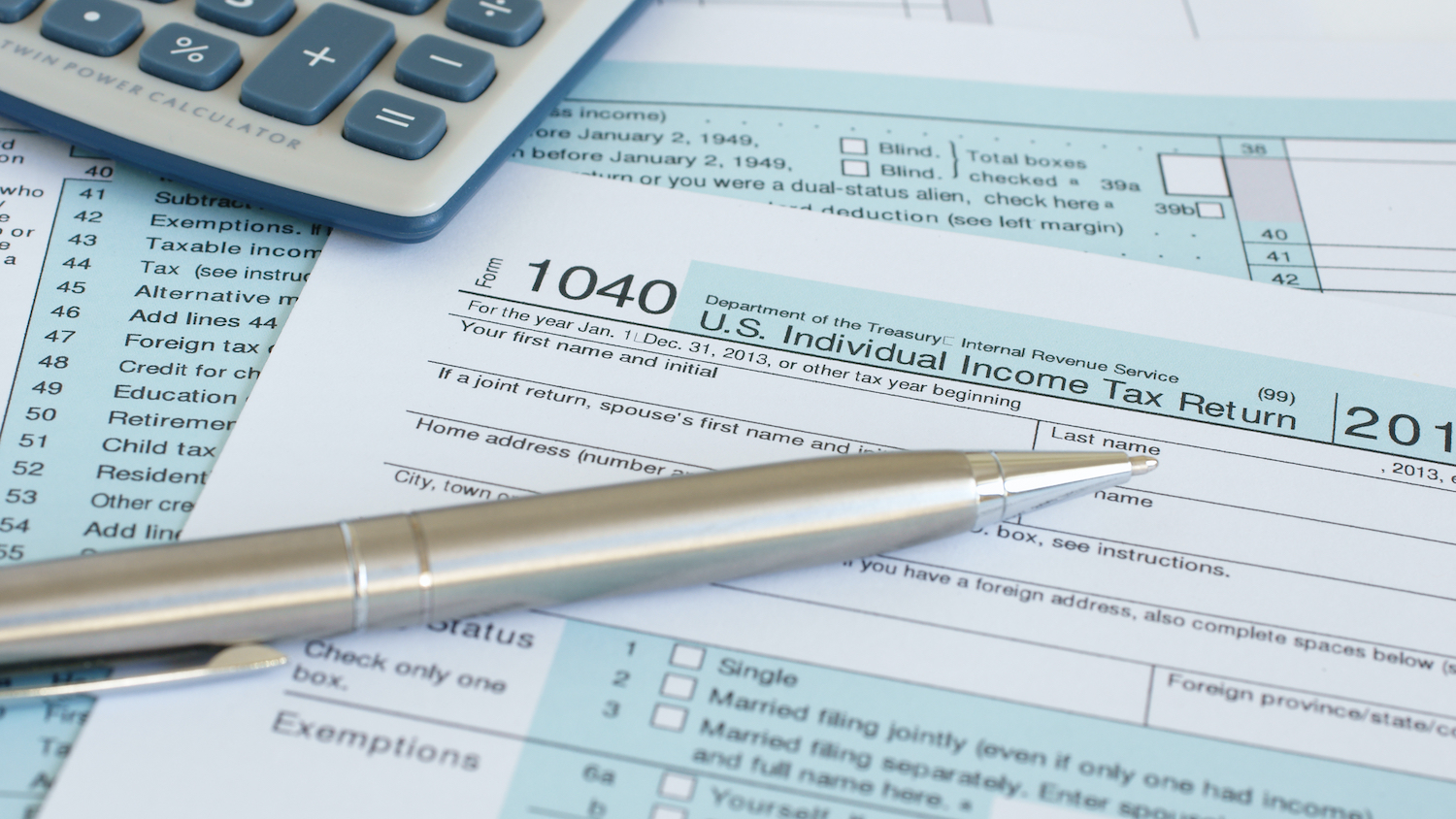
Taxation and Representation: How a Biden Presidency Could Affect Federal Income Taxes
With the 2020 presidential election right around the corner, Nathan C. Goldman and Christina M. Lewellen, assistant professors of accounting at Poole College, identify and discuss the key provisions of Democratic presidential candidate Joe Biden’s tax plan.
By Nathan C. Goldman and Christina M. Lewellen
In recent elections, economics and tax policy have played a key role in candidates’ campaigns – and this year’s impending election is no different.
In 2016, President Trump promised to cut both corporate and personal income taxes in his presidential campaign and within 12 months of his inauguration, he signed the Tax Cuts and Jobs Act (TCJA) into law. The TCJA reduced corporate taxes from a maximum rate of 35 percent to an unprecedented flat rate of just 21 percent.
Additionally, the TCJA overhauled the taxation of international transactions for businesses and made substantial adjustments to individual income tax, including the reduction of individual income tax rates.
Now, with COVID-19’s devastating impact on the economy and a government deficit approaching $4 trillion, the issue of taxation is again of key importance in this election.
Biden has pledged various changes to tax policy if elected – meaning that this year’s presidential election, too, could leave a significant impact on taxation in the United States.
Corporate Tax Changes At the Helm
Biden’s Proposed Corporate Tax Changes:
- Increase the corporate income tax rate from 21% to 28%.
- Impose a minimum corporate tax rate of 15% of financial statement earnings on all corporations with at least $100 million in profits.
- Further increase the tax rate global income for U.S. multinational corporations.
Similar to the 2016 presidential election, corporate income tax reform is a key issue; and for Biden, increasing corporate income taxes are in the crosshairs of his plan. Specifically, Biden proposes to reform these taxes in three key ways.
First, he proposes to increase the corporate income tax rate from 21 percent to 28 percent. This seven percent adjustment represents a mid-point, as the corporate income tax stood at 35 percent prior to the TCJA.
Notably, if this change goes into effect, it will be the second time this decade that a corporate tax rate change has occurred. Prior to 2017, this rate had not been changed significantly since 1986. In other words, this recent volatility represents a departure from tax rates that were previously stable over a long period of time. Additionally, Biden has pledged to impose a minimum corporate tax of 15 percent of financial statement earnings on all corporations with at least $100 million in profits.
This proposal is significant for two reasons. First, it would substantially diminish the incentives for extreme and aggressive tax planning activities, especially those that shift profits abroad. However, it may also lessen firms’ incentives to provide stakeholders with transparent financial information.
Here’s why. Historically, taxable income has been computed independent of financial statement earnings with the purpose of financial statements being able to provide useful information to investors and stakeholders. Biden’s proposal, however, intertwines book income with taxable income. In other words, by proposing a tax on financial statement profits, firms may be less inclined to be transparent with stakeholders.
Last, Biden’s plan seeks to discourage U.S. multinational corporations from shifting income abroad by increasing the minimum tax rate on lightly taxed foreign income from 10.5 percent to 21 percent.
Notoriously, corporations have implemented complex strategies to avoid taxing income in the United States and to shift this income to low-tax countries. In an attempt to curb this, the TCJA introduced the Global Intangible Low-Tax Income (GILTI) tax. Because intangible assets – such as patents, trademarks and copyrights – have greater mobility, firms would often place them in low-tax jurisdictions to shift their income abroad.
The GILTI tax, which taxes multinational corporations’ international profits that are not related to tangible assets at a minimum tax rate of 10.5 percent, was imposed to reduce incentives for firms to use intangible assets as a means of shifting income out of the United States. With an increase of the minimum tax rate to 21 percent, Biden intends to take this a step further and incrementally reduce these incentives.
Tax Changes for Individuals, Especially the Biggest Earners
Biden’s Proposed Individual Tax Changes:
- Raise the top individual income tax rate from the current rate of 37% to 39.6%.
- Increase payroll taxes for the highest earners.
- Raise the long-term capital gains and dividend taxes for individuals who make over $1 million.
- Cap itemized deductions at 28% of adjusted gross income for the wealthiest Americans.
- Increase inheritance taxes by removing the “step up” in basis and lowering the gift-and-estate tax exemption.
- First-time homebuyer’s credit & child and dependent care credit.
In addition to multiple tax changes for corporations, Biden has also proposed several provisions aimed at individuals – especially for the highest-earning Americans.
Specifically, Biden intends to increase the top individual income tax rate from where it stands at 37 percent to 39.6 percent. Though this tax rate is already set to increase to 39.6 percent in 2026 under TCJA, Biden plans to make this change effective immediately – which would essentially reverse the tax cuts under the TCJA.
Biden’s plan also involves increasing payroll taxes for the highest earners. In 2020, individuals only pay Social Security tax on wages up to $137,700, but earnings above that limit are exempt from the Social Security tax –– a policy Biden’s plan upholds. However, he plans to make income earned above $400,000 subject to the tax.
For individuals who earn more than $1 million, Biden plans to raise their long-term capital gains and dividend taxes –– increasing the tax rate from 20 percent to 39.6 percent. In other words, the capital gains income for high-earning individuals will be taxed at the same rate as their ordinary income.
To prevent wealthy Americans from taking advantage of itemized deductions on tax returns, Biden proposes capping these deductions at 28 percent of their adjusted gross income. As it stands, there is no cap on the amount of itemized deductions Americans can take on their tax returns, which allows for some to deduct a substantial amount.
Biden has also proposed changes that would substantially increase taxes owed upon the death of an individual; but this, too, primarily affects the wealthiest taxpayers. First, Biden seeks to increase inheritance taxes by removing the stepped-up basis provision.
Currently, when an asset is passed on to an heir upon an individual’s death, the tax basis of the asset is readjusted to reflect the higher fair market value at the time of the inheritance, a step up from the original purchase price of the original owner. With the step-up in basis in place, the capital gains tax – the tax paid on the difference between the tax basis and the sales price of the asset – is minimized.
Many criticize this as a loophole allowing wealthy Americans to significantly reduce their capital gains tax burdens. Biden’s provision would remove the step-up in basis for unrealized capital gains, resulting in a significantly higher capital gains tax.
Additionally, Biden proposes lowering the gift-and-estate tax exemption – the value of an inherited property that goes untaxed – from $11.59 million to $5.79 million. This, too, will increase taxes for wealthy Americans.
While most of Biden’s provisions aim to increase taxes for the wealthiest individuals, he has also pledged to provide tax credits – dollar-for-dollar reductions in the tax an individual owes – to less wealthy individuals. For first-time homebuyers, he plans to institute a tax credit worth up to $15,000. Likewise, he plans to increase the current maximum of child and dependent care tax credit from $2,100 to $8,000.
The Risks and Rewards
Taking all of Biden’s proposed tax changes into account, both direct and indirect consequences come into view.
Again, with the United States approaching a deficit of $4 trillion in 2020 – a deficit that has steadily increased during the COVID-19 pandemic, especially with the CARES Act that injected much-needed capital into U.S. businesses – an increase in tax revenues is necessary.
Biden’s proposed tax changes help to address this problem, pointing naturally to an increase in federal tax revenue, with current estimates ranging from $3.3 trillion to $3.7 trillion over the next decade.
Additionally, many of Biden’s provisions appear reasonable in terms of an equitable distribution of the tax burden, with the majority of tax change proposals aimed at the wealthiest Americans. With tax rate increases focused on the highest earners, 90 percent of taxpayers will see few changes to their after-tax income. The Tax Policy Center estimates that under Biden’s changes, the lower-earning 90 percent will see less than a one percent decline in their after-tax income. Meanwhile, taxpayers in the top one percent will face a 12 percent decline in their after-tax income and taxpayers in the 0.1 percent will face an even sharper decline of 17 percent.
In other words, the lower class and middle class will be spared from the direct effects of Biden’s proposed changes.
On the other hand, the Tax Foundation estimates that the provisions of Biden’s tax plan may yield some negative consequences. Specifically, it estimates that Biden’s plan may cost the economy approximately 585,000 jobs – and could reduce the U.S. gross domestic product by 1.51 percent.
In turn, Biden’s tax provisions may produce some significant indirect consequences. Consistent with economics, finance and accounting literature, corporations may pass the burden of taxation onto shareholders through lower wages and higher product costs, which would implicitly increase taxes for everyone1.
And though Biden’s international tax proposals intend to discourage multinational corporations from shifting income abroad, they may in fact have the opposite effect. Because he proposes increasing the tax rate on foreign intangible income, firms may be incentivized to get around these provisions by shifting jobs, operations and other tangible assets outside of the United States2.
It is also of great importance that Biden does not take the traditional approach of computing taxable income independently of financial statement income. Because these two numbers are intended to serve distinct purposes and objectives, independence is essential. In fact, accounting studies show that when the two are linked, with a minimum tax on corporate financial statement income, the informativeness of financial statements are effectively lowered3.
Taken together, it is evident that Biden’s proposals for increasing income taxation will have significant direct benefits – particularly in reducing the growing deficit. At the same time, these increases may also produce several unintentional and indirect consequences – and should Biden be voted into office, his administration must work carefully to balance these factors and combat potential drawbacks.
But as Americans prepare to head to the polls this November, one thing is virtually certain – in view of the current economy, changes to federal tax law are inevitable.
Resources
1 See Harberger (1962), Stiglitz (1973), Hartman (1985), Dhaliwal Krull, Li, and Moser (2005)
2 See Drake, Goldman, and Murphy (2019)
3 See Guenther, Nutter, and Maydew (1997), Hanlon, Maydew, and Shevlin (2008), and Blaylock, Gaertner, and Shevlin (2015)
Blaylock, B., Gaertner, F., & Shevlin, T. (2015). The association between book-tax conformity and earnings management. Review of accounting studies, 20(1), 141-172.
Dhaliwal, D., Krull, L., Li, O. Z., & Moser, W. (2005). Dividend taxes and implied cost of equity capital. Journal of Accounting Research, 43(5), 675-708.
Drake, K. D., Goldman, N., & Murphy, F. (2019). Foreign Employment, Income Shifting, and Tax Uncertainty. University of Connecticut School of Business Research Paper, (18-23).
Guenther, D. A., Maydew, E. L., & Nutter, S. E. (1997). Financial reporting, tax costs, and book-tax conformity. Journal of Accounting and Economics, 23(3), 225-248.
Hanlon, M., Maydew, E. L., & Shevlin, T. (2008). An unintended consequence of book-tax conformity: A loss of earnings informativeness. Journal of Accounting and Economics, 46(2-3), 294-311.
Harberger, A. C. (1962). The incidence of the corporation income tax. Journal of Political economy, 70(3), 215-240.
Hartman, D. G. (1985). Tax policy and foreign direct investment. Journal of Public economics, 26(1), 107-121.
Stiglitz, J. E. (1973). Taxation, corporate financial policy, and the cost of capital. Journal of Public Economics, 2(1), 1-34.
- Categories:
- Series:


